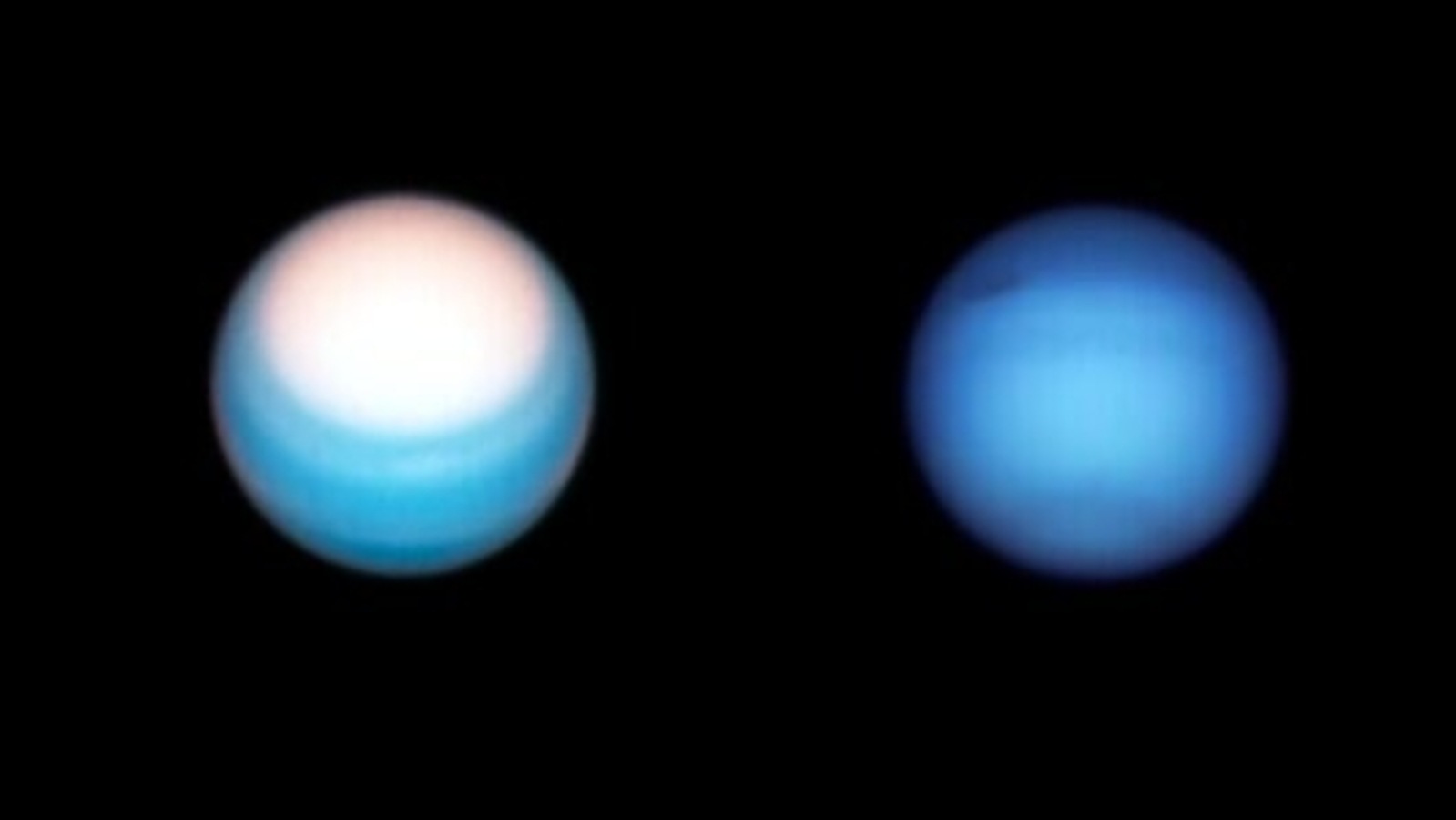Why Uranus and Neptune colours are different: NASA's Hubble Telescope has the answer
Uranus and Neptune have a lot in common, but they still look different in terms of colour! Now, NASA's Hubble Telescope has found the reason behind it.

Neptune and Uranus share many common features - they have similar masses, sizes, and atmospheric compositions, and a lot more, but still, have you ever wondered why the planets look so different? Skywatchers must have noticed while staring into the night sky that Uranus looks so pale unlike Neptune, which is in a deep blue colour. Well, thanks to NASA's Hubble Telescope, astronomers may now know why Uranus and Neptune are different colours.
Astronomers now have an explanation for this distinctive difference in colours of Neptune and Uranus despite sharing several commonalities.
Researchers designed a single atmospheric model that matches observations of both planets using data from the NASA Hubble Space Telescope, the Gemini North telescope, and the NASA Infrared Telescope Facility. According to the model, the abundance of haze on Uranus builds up in the planet's stagnant, sluggish atmosphere, giving it a lighter tone than Neptune. Also read: NASA Hubble Telescope discovers a giant Galaxy; Sized 2.5x LARGER than our Milky Way Galaxy!
Reasons behind different colours of Uranus and Neptune
The new research suggests that a layer of concentrated haze that exists on both planets is thicker on Uranus than on Neptune, causing Uranus to look whiter than Neptune. The atmospheres of Neptune and Uranus would seem nearly identically blue if there was no haze in their atmospheres due to blue light scattered in their atmospheres. Also Read: NASA Hubble Space Telescope spots Hidden Galaxy behind Milky Way Galaxy!
Three layers of particles at various heights make up the team's model. The middle layer, which is a layer of haze particles thicker on Uranus than on Neptune, is the primary layer that impacts the colours. Methane ice condenses onto the particles in this layer on both worlds, dragging them deeper into the atmosphere in a shower of methane snow, according to the study. The research team believes Neptune's atmosphere is more effective at mixing up methane particles into the haze layer and producing this snow because it has a more active, turbulent atmosphere than Uranus'. This removes additional haze and keeps Neptune's haze layer thinner than Uranus', allowing Neptune's blue colour to shine out.
"We hoped that developing this model would help us understand clouds and hazes in the ice giant atmospheres," Dr. Mike Wong, an astronomer at the University of California and a member of the team behind this result, has commented.
Catch all the Latest Tech News, Mobile News, Laptop News, Gaming news, Wearables News , How To News, also keep up with us on Whatsapp channel,Twitter, Facebook, Google News, and Instagram. For our latest videos, subscribe to our YouTube channel.





























